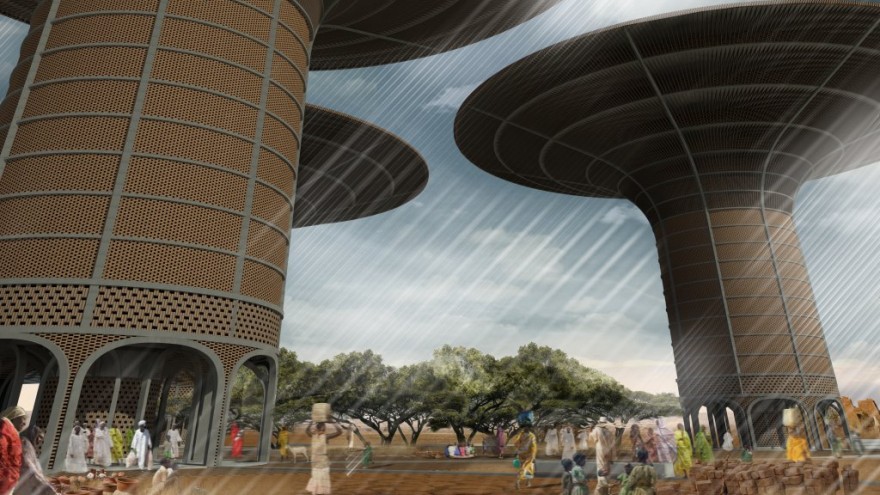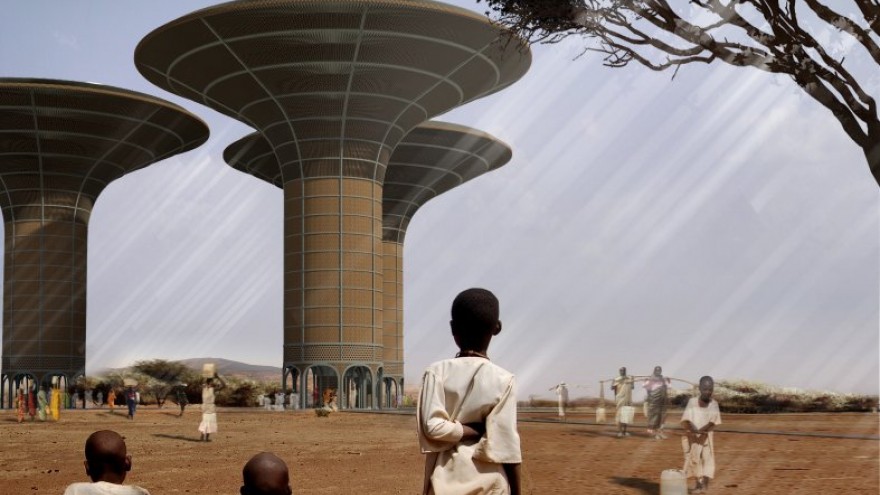Since the United Nations declared the independence of the African nations and subsequently the end of colonisation in the 1960s, much of the political unrest in Sudan has been due to the conflict over water and land. In 2007, scientists from the University of Boston discovered an underground lake in Darfur, the 10th-biggest lake in the world, which has the potential to resolve this ongoing conflict.
Attempting to find a solution, architect Hugon Kowalski of Polish firm H3AR has put forward a proposal for a building that allows access to underground water through the application of water pumps. H3AR was founded by four young designers from Poland – Alba Labuda, Agnieszka Nowak, Ryszard Rychlicki and Kowalski – and primarily focus on architecture, urbanism and design.
Kowalski’s water tower skyscraper, inspired by the African Baobab tree, houses water pumps, a treatment plant, a hospital, a school and a food storage centre. Acting as more than just a solution for the conflict in Sudan, the water tower is designed to stimulate economic development as well as cultural exchange and coexistence between the three different religions and languages present in the area.
The water tower is constructed from compressed, dry-stacked clay bricks. These are made onsite using a rough mixture of earth, cement and water, and then baked in the hot sun requiring no extra energy and lessening the environmental impact of the materials. The choice of using this lo-fi technology represents the desire to introduce alternative and sustainable solutions into a context that is often laboured with standardised, but not always optimised, building practice.
The design proposal for Kowalski’s water tower skyscraper was part of the 2010 skyscraper competition hosted by eVolo magazine.









